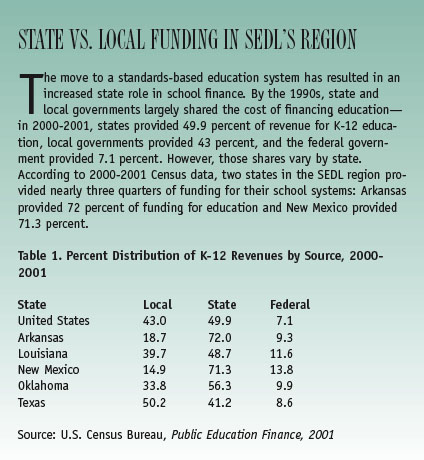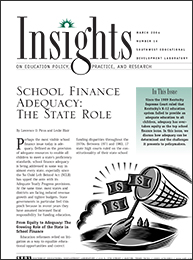From Equity to Adequacy: The Growing Role of the State in School Finance

Education reformers relied on litigation as a way to equalize educational opportunities and correct funding disparities throughout the 1970s. Between 1971 and 1983, 17 state high courts ruled on the constitutionality of their state school finance systems, and a number of state finance systems were found unconstitutional, including those in Arkansas, California, Connecticut, New Jersey, Washington, West Virginia, and Wyoming. As a result of intense litigation during that 12-year period, almost every state attempted to redefine inputs into the educational system, and in doing so, many assumed a larger share of school funding (Augenblick, 2002).
The accountability movement has also expanded the state role in school finance and helped shift the focus of litigation from equity to adequacy. The connection between accountability and adequacy is clear: If states are holding districts and schools accountable for what students should know and be able to do, then states must provide the resources to enable schools and districts to meet the state-set standards.
Next Page: Determining the Cost of an Adequate Education

